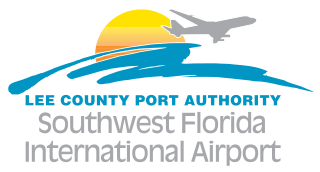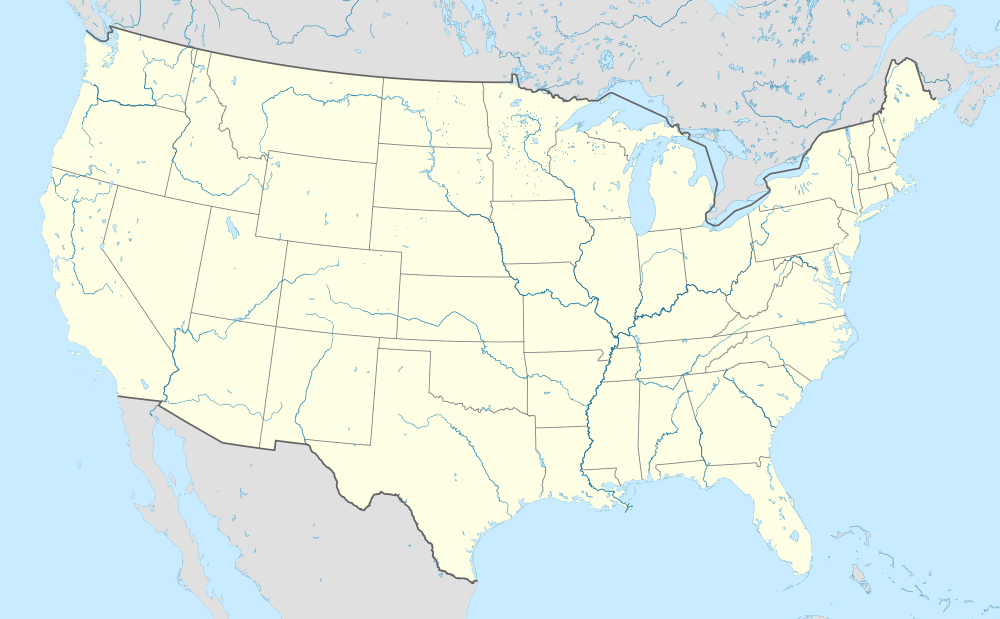
Washington Dulles International Airport is an international airport in Loudoun County and Fairfax County in Northern Virginia, United States, 26 miles (42 km) west of downtown Washington, D.C.

Phoenix Sky Harbor International Airport is a civil-military public international airport 3 mi east of downtown Phoenix, in Maricopa County, Arizona, United States. It is Arizona's largest and busiest airport; among the largest commercial airports in the United States, PHX was the 8th-busiest airport in the United States and 22nd-busiest in the world in 2021. The airport serves as a hub for American Airlines and a base for Frontier Airlines and Southwest Airlines.

Portland International Airport is a joint civil–military airport and the largest airport in the U.S. state of Oregon, accounting for 90% of the state's passenger air travel and more than 95% of its air cargo. It is within Portland's city limits just south of the Columbia River in Multnomah County, 6 miles by air and 12 mi (19 km) by highway northeast of downtown Portland. Portland International Airport is often referred to by its IATA airport code, PDX. The airport covers 3,000 acres of land.

Ronald Reagan Washington National Airport is a public airport in Crystal City, Virginia, United States, 5 miles (8.0 km) from Washington, D.C. It is the closest airport to Washington, D.C., the nation's capital, the 24th-busiest airport in the nation, the busiest airport in the Washington metropolitan area, and the second busiest in the Washington–Baltimore combined statistical area.

Hartsfield–Jackson Atlanta International Airport is the primary international airport serving Atlanta and its surrounding metropolitan area, in the U.S. state of Georgia. The airport is located 10 mi south of the Downtown Atlanta district. It is named after former Atlanta mayors William B. Hartsfield and Maynard Jackson. The airport covers 4,700 acres of land and has five parallel runways which are aligned in an east–west direction. There are three runways that are 9,000 feet (2,743 m) long, one runway that is 10,000 feet (3,048 m) long, and the longest runway at ATL measures 12,390 feet (3,776 m) long, which can handle the Airbus A380. Since 1998, Hartsfield–Jackson has been the world's busiest airport by passenger traffic. In 2023, the airport served over 104.6 million passengers, the most of any airport in the world. Hartsfield–Jackson is also the world's busiest airport by aircraft movements.

Oakland International Airport, officially Metropolitan Oakland International Airport, is an international airport in Oakland, California, United States. The airport is located 7 miles (11 km) south of Downtown Oakland and 12 miles (19 km) east of San Francisco, serving the East Bay of the San Francisco Bay Area. The airport is owned by the Port of Oakland and has domestic passenger flights to cities throughout the United States and international flights to Mexico, El Salvador, and Portugal, in addition to cargo flights to China and Japan. The airport covers 2,600 acres (1,100 ha) of land. The airport is an operating base for Southwest Airlines, which operates point-to-point routes with bases instead of a traditional network with hubs.

Harry Reid International Airport, formerly known as McCarran International Airport, is an international airport serving the Las Vegas Valley, a metropolitan area in the U.S. state of Nevada. It is located five miles south of downtown Las Vegas, in the unincorporated area of Paradise, and covers 2,800 acres of land.

Louis Armstrong New Orleans International Airport is an international airport under Class B airspace in Kenner city, Jefferson Parish, Louisiana, United States. It is owned by the city of New Orleans and is 11 miles (18 km) west of downtown New Orleans. A small portion of Runway 11/29 is in unincorporated St. Charles Parish. Armstrong International is the primary commercial airport for the New Orleans metropolitan area and southeast Louisiana.

Salt Lake City International Airport is a joint civil-military international airport located about 4 mi west of Downtown Salt Lake City, Utah, United States. The airport, along with the much smaller Provo Airport (PVU) and Ogden–Hinckley Airport (OGD) are the closest commercial airports for more than 3 million people and is within a 30-minute drive of nearly 1.3 million jobs. The airport serves as a hub for Delta Air Lines and is a major gateway to the Intermountain West and West Coast. The airport sees 343 scheduled nonstop airline departures per day to 93 cities in North America and Europe. It is by far the busiest airport in Utah.

Daniel K. Inouye International Airport, also known as Honolulu International Airport, is the main and largest airport in Hawaii. The airport is named after Honolulu native and Medal of Honor recipient Daniel Inouye, who represented Hawaii in the United States Senate from 1963 until his death in 2012. The airport is in the Honolulu census-designated place 3 miles (4.8 km) northwest of Honolulu's central business district. The airport covers 4,220 acres (1,710 ha), more than 1% of Oahu's land.

Eugene Airport, also known as Mahlon Sweet Field, is a public airport 7 miles (11 km) northwest of Eugene, in Lane County, Oregon, United States. Owned and operated by the City of Eugene, it is the fifth-largest airport in the Pacific Northwest.

El Paso International Airport is an international airport located four miles (6 km) northeast of downtown El Paso, in El Paso County, Texas, United States. It is the busiest commercial airport in West Texas, and also serves Southern New Mexico and Northern Mexico. It handled 3,904,110 passengers in 2023, with 96,316 aircraft operations.

San Antonio International Airport is an international airport in San Antonio, Texas, United States. It is in Uptown Central San Antonio, about 8 miles (13 km) north of Downtown. It has three runways and covers 2,305 acres (933 ha). Its elevation is 809 feet (247 m) above sea level. SAT averages 260 daily departures and arrivals at its 27 gates, which serve 14 airlines flying non-stop to 45 destinations in the US, Mexico and Germany. The airport is the 44th busiest airport in the United States by passenger traffic.

Albuquerque International Sunport, locally known as the Sunport, is the primary international airport serving the U.S. state of New Mexico, particularly the Albuquerque metropolitan area and the larger Albuquerque–Santa Fe–Los Alamos combined statistical area. It handles around 5.4 million passengers annually and over 400 flights daily. ABQ is located in Bernalillo County, between the Rio Grande and the Sandia Mountains, east of Old Town and Barelas, 3 miles (5 km) southeast of downtown, south of the University of New Mexico and directly to the west of Sandia National Laboratories and Kirtland Air Force Base.

Southwest Florida International Airport is a major county-owned airport in the South Fort Myers area of unincorporated Lee County, Florida, United States. The airport serves the Southwest Florida region, including the Cape Coral-Fort Myers, Naples-Marco Island, and Punta Gorda metropolitan areas, and is a U.S. Customs and Border Protection port of entry. It currently is the second-busiest single-runway airport in the United States, after San Diego International Airport, California. In 2022, the airport served 10,343,802 passengers, the most in its history.

Sacramento International Airport is an international airport located in Sacramento, 10.5 mi (16.9 km) northwest of Downtown Sacramento in Sacramento County, California, United States and covers 6,000 acres (2,400 ha). It serves the Sacramento Metropolitan Area, and it is run by the Sacramento County Airport System.

Eppley Airfield, also known as Omaha Airport, is an airport in the midwestern United States, located three miles (5 km) northeast of downtown Omaha, Nebraska. On the west bank of the Missouri River in Douglas County, it is the largest airport in Nebraska, with more arrivals and departures than all other airports in the state combined. It is classified as a medium hub airport by the Federal Aviation Administration (FAA). It is owned and operated by the Omaha Airport Authority (OAA).

Palm Springs International Airport, formerly Palm Springs Municipal Airport, is an airport two miles east of downtown Palm Springs, California, United States. The airport covers 940 acres and has two runways. The facility operates year-round, with most flights occurring in the fall, winter, and spring.

Reno Air was a scheduled passenger airline headquartered in Reno, Nevada, United States. Reno Air provided service from its hubs at Reno/Tahoe International Airport in Reno, Nevada, San Jose International Airport in San Jose, California and Las Vegas International Airport in Las Vegas, Nevada to destinations throughout the western United States, including Alaska. International service to Vancouver, British Columbia in western Canada was also served at one point and limited service was operated to the midwestern U.S. as well. A small stand alone operation was also undertaken at one point in the southeastern U.S. with the service being based in Gulfport, Mississippi. American Airlines acquired Reno Air in 1999.

Charles M. Schulz–Sonoma County Airport is a domestic airport located 7 miles (11 km) northwest of downtown Santa Rosa, California, in Sonoma County, California, United States.





































